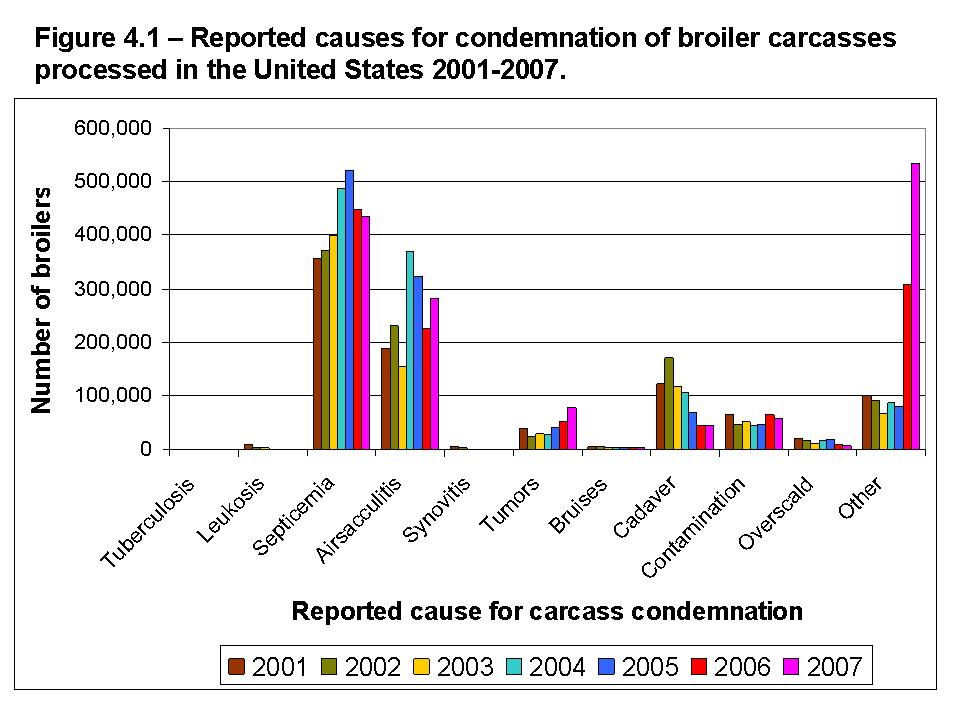Chapter 4 - Septicemia
Chapter 4 - Septicemia
As previously indicated, septicemia is typically the main cause for carcass condemnation in broiler processing plants in the U.S. (see Figure 4.1). Septicemia, also known as toxemia, is general condemnation category that includes clear signs of systemic disease involvement. Septicemia is manifested by a group of clinical signs, not all of which will be present in a single carcass. Therefore, judgment plays an important part in correct dispositions for this condemn category. Septicemic carcasses frequently have petechial (pin point) hemorrhages on the heart, liver, kidneys, muscles and serous membranes. Blood-tinged exudates are often present in the body cavity. The liver and spleen are often swollen and hyperemic (contain an excess of blood), because they remove most of the bacteria from the circulating blood. Kidneys may appear swollen and congested. The skin of septicemic birds may be hyperemic. Depending upon the cause and duration of septicemia, carcasses at the time of slaughter may be hyperemic, cyanotic, anemic, dehydrated and edematous or exhibit some combination of these signs. No single carcass will shown all of these signs.
Septicemia/toxemia is commonly referred to as ‘sep/tox.’ If a carcass shows systemic change, it is condemned. This category is a catchall for those carcasses that have septicemia, toxemia or a combination of septicemia-toxemia.

